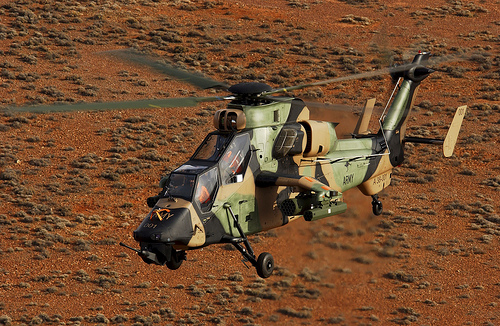Software industry meets Defence demand

The Australian defence software industry has passed a "health check" by the Defence Materiel Organisation (DMO), which determined that its relationship with industry is up to par to support military software.

The "Tiger" armed reconnaissance helicopter currently in use by the Australian Defence Force.
(Image by mashleymorgan, CC BY-SA 2.0)
DMO routinely conducts health checks on different areas of its capabilities. One of the latest is to support the software through its life, including real-time support of the mission- and safety-critical software, such as the systems used in the Department of Defence's (DoD) aircraft, vessels and communication systems.
DMO found that the DoD is providing enough demand for industry to contribute software engineers to work on its armed reconnaissance helicopters. The engineers are responsible for the operating systems that run on these aircraft, and the multi-function heads-up displays that provide information for weapon sights and flight information.
Although there has been a decrease in the need for software engineers to work on software design for Anzac frigates, DMO stated that there would still be a demand for future software integration and upgrade projects. At the moment, the software for these vessels takes information from on-board sensors, like radars and infrared detectors, and feeds them to weapons systems.
The report said that Orion patrol aircraft have maintenance and support requirements that will continue throughout their service life, keeping demand at steady levels. The software on these aircraft is responsible for taking inputs from flight instruments, and also for controlling the aircraft's radar and weapons systems.
The Defence Science and Technology Organisation is currently cooperating with industry on the DoD's Nulka decoys, an Australian-designed countermeasure designed to protect vessels against anti-ship missiles. DMO said that the industry is already providing an adequate supply of skilled engineers and technicians for this project, and that it could be sustained, even with the expectation that the technology will be further developed.
The report also found that there would be enough work on the DoD's battlefield-command support and battlefield-management systems as long as software obsolescence is considered, although it expects a short-term decline in development work. The software for these systems links communication systems between land and amphibious operations, as well as between the DoD and allied countries.
Workload demand for the DoD's Wedgetail aircraft is a little more uncertain, with DMO stating that compliance and upgrade requirements had restricted the scope of the health check to a more present time frame. Despite this, it expects that the industry will meet the DoD's needs in terms of software configuration, integration and testing. Software for these aircraft include navigational and sensor control, but also mission simulation and operational flight training.
While these findings provided a good outset for the private defence industry in Australia, there were some concerns that DMO outlined in its report.
In particular, it is worried about the reliance that Australia places on off-the-shelf equipment-procurement strategies, and how this might affect the size of industry supply relative to the DoD's capital equipment budget.
Keeping critical systems secret is also an issue, with DMO calling into question whether Australia's ability to obtain source codes from overseas software designers would encourage a shift towards "open" software architecture.
Lastly, it raised concerns over what training opportunities are available in the industry, and whether there would be enough available and appropriately skilled software engineers as a result.